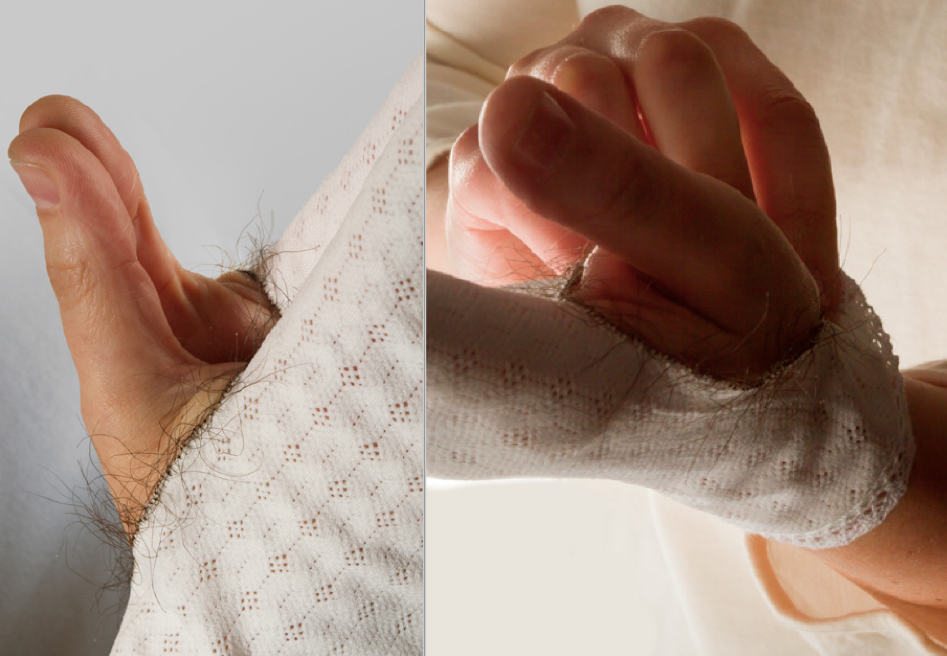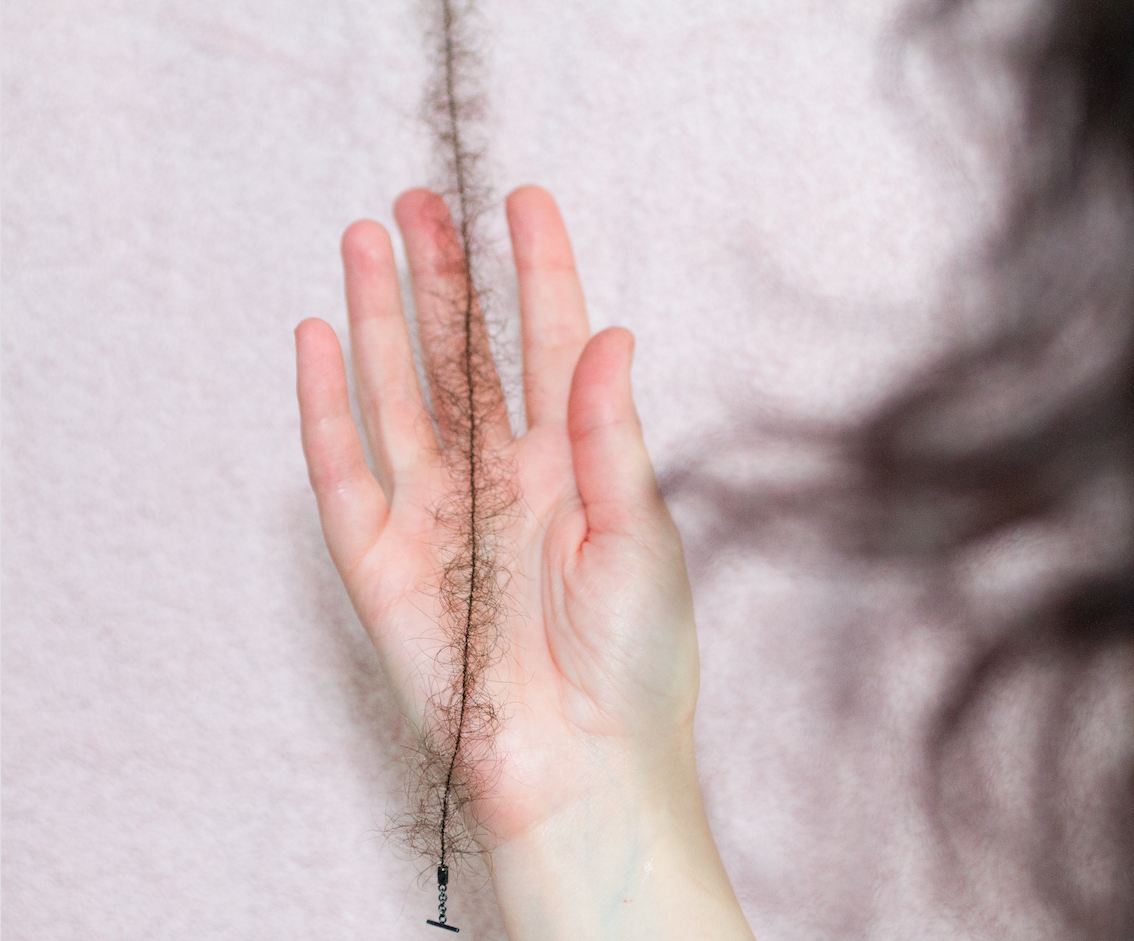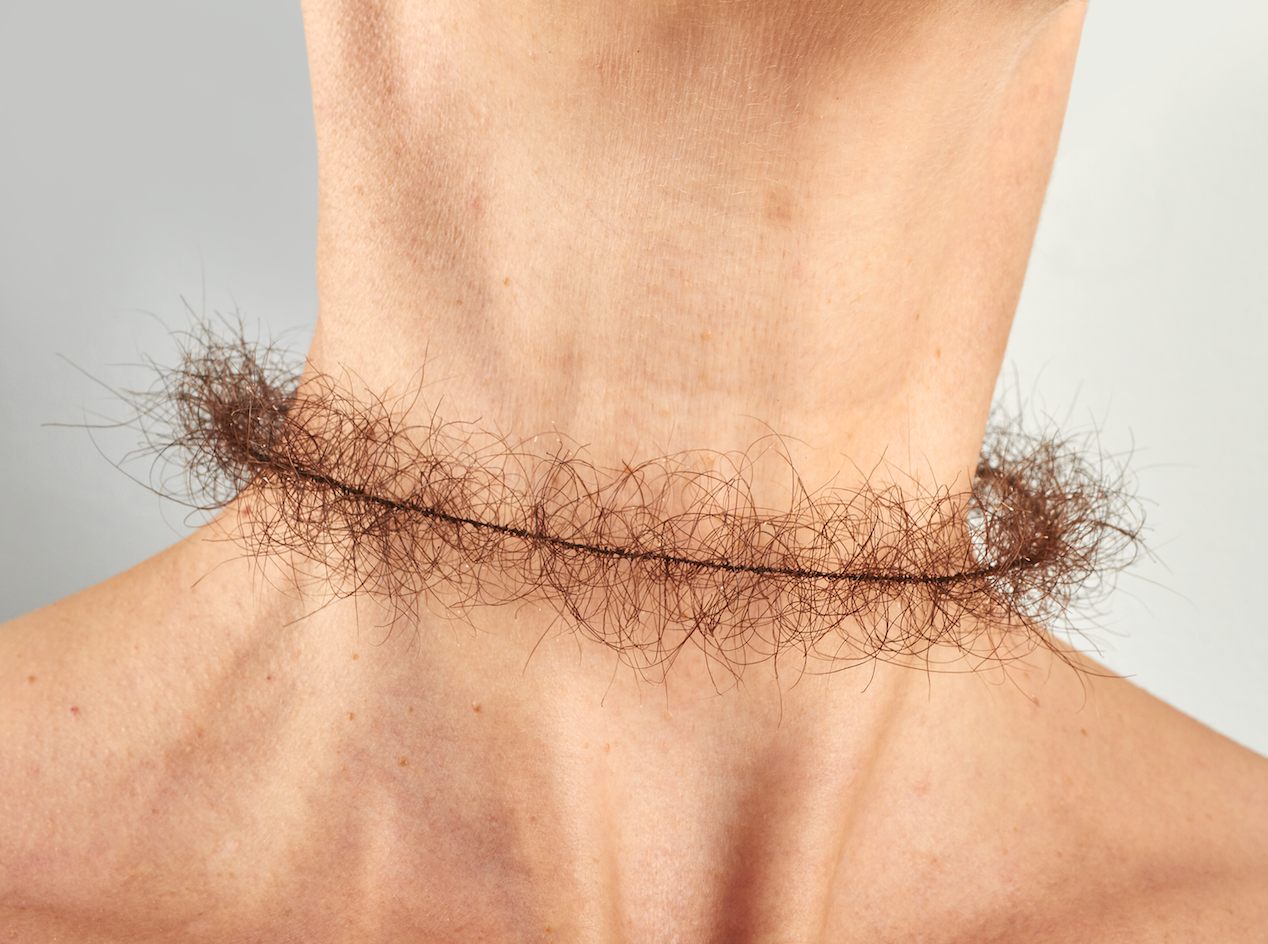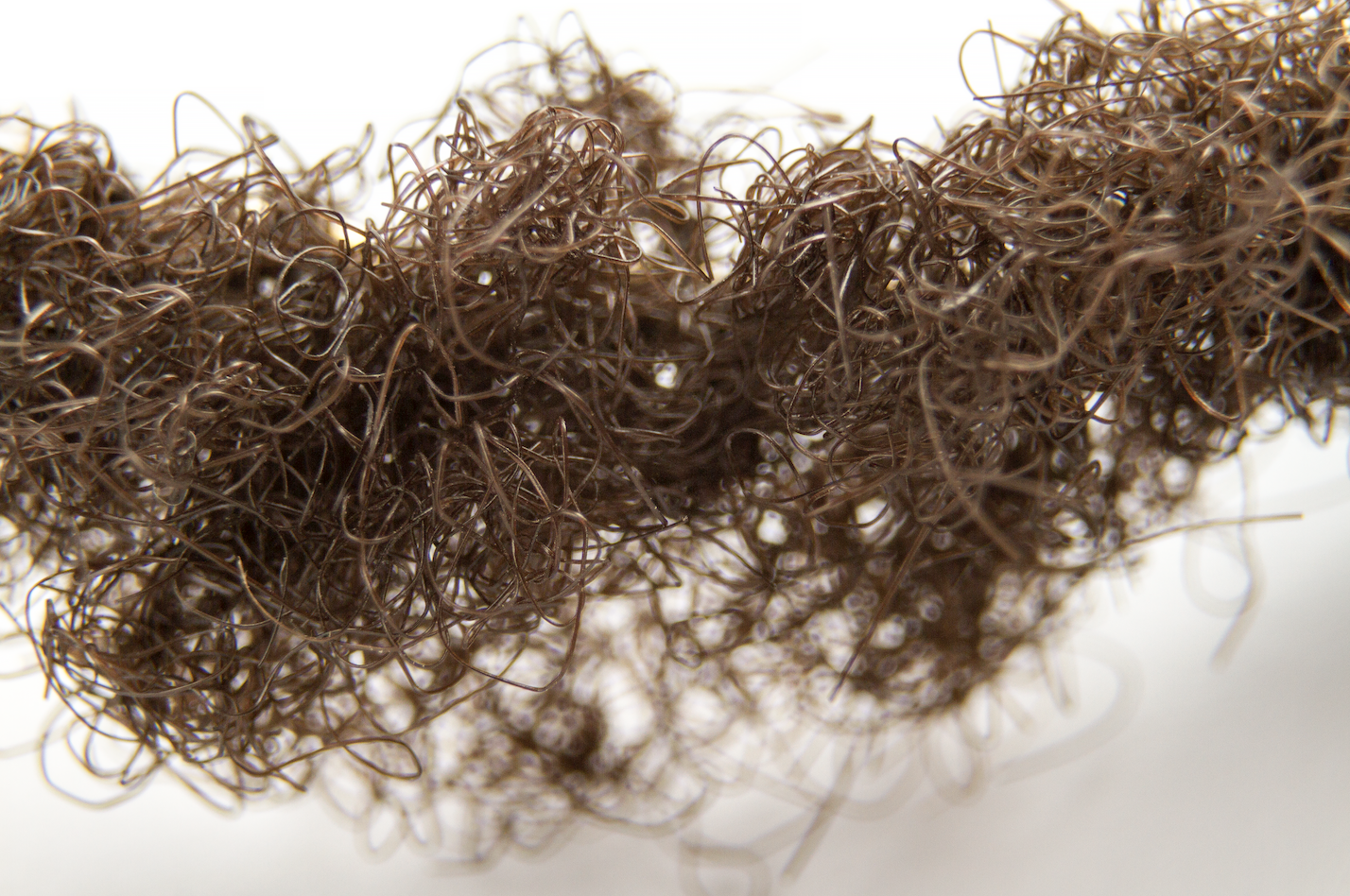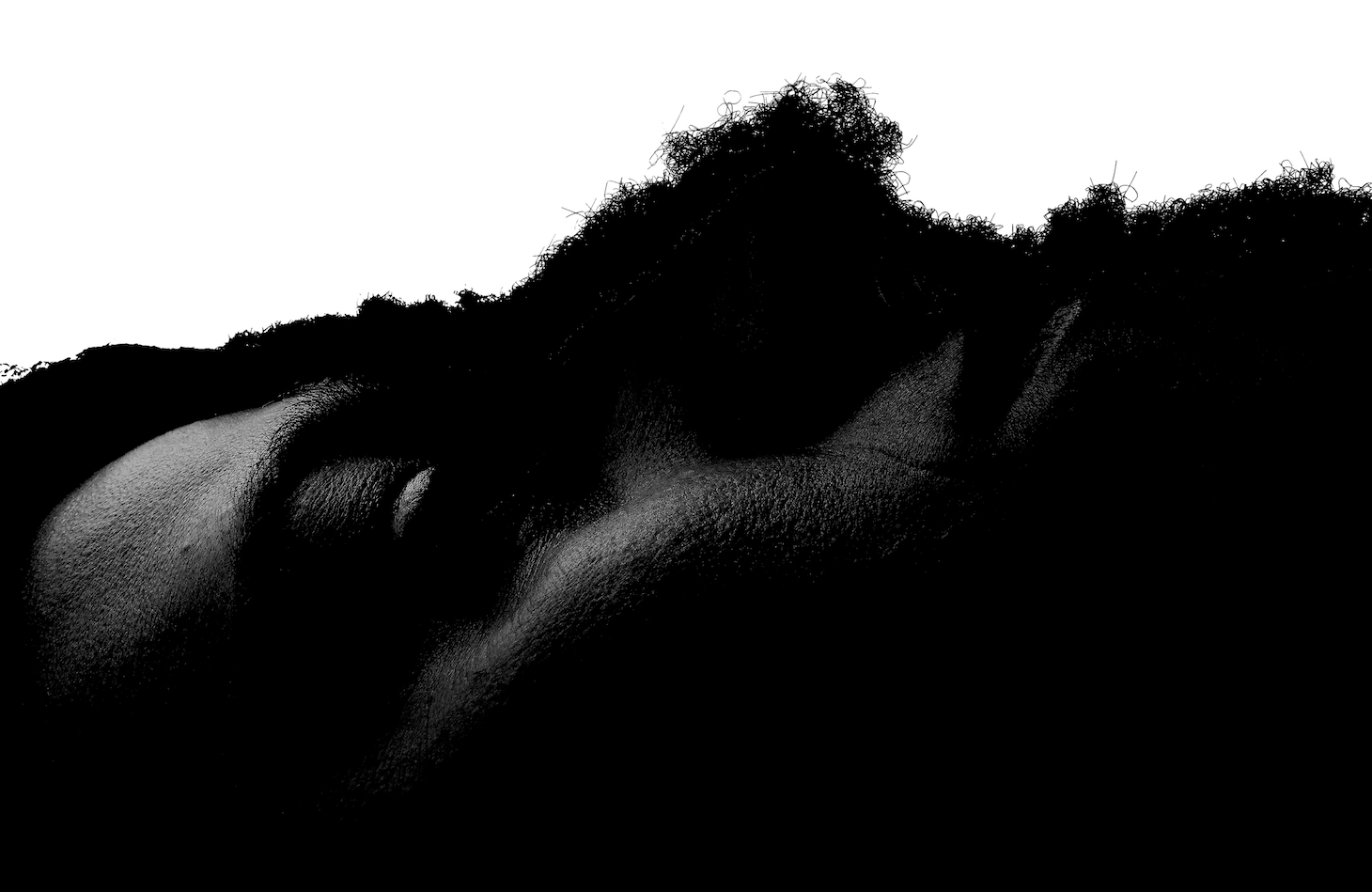Purity or Promiscuity?
The artistic research Purity or Promiscuity? Exploring Hair as a Raw Material in Jewellery and Art, explores the potential of hair to produce contradictory meanings when used as the main material in jewellery and art. Many of the creative works developed have been created to show the ambiguities and the contradictions present in hair as well as in life. With the research, my aim was also to try to answer some of the questions that arose through my practice, such as:
What kind of significance can hair express and communicate when is used as a raw material?
Human hair proved to be an excellent working material, with immense potential because of its manipulative and malleable properties. The hair separated from the head because it had fallen or was cut, acquired a new quality as raw material. Raw materials are chosen in order to be worked and to transmit ideas. Hair as a material seems to have the ability to produce different and often opposite meanings.
What will be the viewer’s response to the hair used for creative purposes?
I could verify that the “encounter” with hair can provoke contradictory reactions. Once separated from its owner, it is able to attract or repel us, as the abject. The abject disrupts our established rational order of things.[1] And to disturb social order and disrupt the familiar seem to be attributes of the uncanny.[2]
During the course of the research (2011-2016), three exhibitions were produced and showcased in Tallinn, Estonia. In the following series of images, the highlights from the exhibitions will be presented in chorological order.
Purus et Promiscus – Latin for Purity or Promiscuity – was an exhibition held at the Requiem Chapel of the Dominican Monastery, in 2014. The work was intended to be a reflection on sexual repression and abuse of power. It is this power which sometimes seems to be used to “penetrate” everything and everyone.
There was purity, but suddenly someone came and took innocence away. All light was obscured by darkness, and promiscuity reigned. What was taken cannot be replaced. What was once hidden will now come to light and be revealed.
The oppositions and contradictions about hair are constant, highlighting the ambiguous significance of hair. It seems that it cannot be considered pure, but rather it is considered impure or even promiscuous, which may be why it is cut in rituals of purification.[3] And since long and loose hair can be associated with unrestrained sexuality, considers the anthropologist E. R. Leach, a woman’s long hair may be regarded as a symbol of femininity. In many cultures, having a long hair, strong and loose, is associated with having an active sexual life.[4]
The location chosen for the second exhibition, in 2015, entitled Filthy/Chastity, was a perfectly clean bathroom. A bathroom is an intimate space where we execute contrasting actions. We use this private space daily to clean ourselves. This intimate space is also the place where we expel our dirt. Hair seems to possess a marginal status, like dirt. According to the anthropologist Mary Douglas dirt is “matter out of place.”[5] It does not respect the borders, it is located in a boundary state between the living and the dead. Maybe this is the reason why it is considered polluted and dirty matter. Hair can be regarded as a filthy matter rather than chaste matter, which is why it is often cut as a sign of renunciation.
An invitation to touch, given at the exhibition: After washing of hands, the viewers were welcome to touch the objects.
Hair strongly appeals to our senses. We often want to touch hair, but whose hair will we touch? What about those conditions when we think of pubic hair?
For the third exhibition, Remain/Cease, in 2015, the location was in a Graveyard in the ruins of the Pirita Convent. As the body goes through a process of deterioration through time, fragility is implicit in life. Hair, however, does not decompose. Much like hair, a piece of jewellery remains when we cease. The value and importance of some jewellery depends more on the relationship that has been established with it, to whom it belonged, and the memories it can carry. The use of human hair as a raw material was a strong medium used to represent memory, intimacy and create sentimental significance. According to the social anthropologists Elizabeth Hallam and Jenny Hockey, the potency of human as facilitators of personal memory is evident in the use of hair in jewellery.[6]
Hair possesses notable qualities of durability that are opposite to the body’s fragility. If there is one thing we can be sure of about hair is that it will be able to Remain when we Cease.
What will remain when you/we cease?
Notes
[1] The meaning of the term ‘abject’ is developed in Julia Kristeva’s book Powers of Horror: An Essay on Abjection.
[2] Hal Foster, Compulsive Beauty, An October Book. Massachusetts, England: MIT Press, 1993, p. xvii.
[3] P. Hershman, “Hair, Sex and Dirt”, Man: The Journal of the Royal Anthropological Institute, New Series, Vol. 9, No. 2, 1974, p. 286.
[4] E. R. Leach, “Magical Hair”, The Journal of the Royal Anthropological Institute of Great Britain and Ireland, Vol. 88, 1958. pp. 154, 157.
[5] Mary Douglas, Purity and Danger: An Analysis of Concepts of Pollution and Taboo. New York: Routledge, 1984 [1966], p. 41.
[6] Elizabeth Hallam and Jennifer Hockey, Death, Memory and Material Culture. Oxford, New York: Berg, 2001, p.136.
Reference List
Bury, Shirley, An Introduction to Sentimental Jewellery. London: HMSO/Victoria & Albert Museum, 1985.
Bury, Shirley, Jewellery 1789‑1910: The International Era, 2 vols. Woodbridge: The Antique Collectors’ Club, 1991.
Douglas, Mary, Purity and Danger: An Analysis of Concepts of Pollution and Taboo. New York: Routledge, 1984 [1966].
Foster, Hal, Compulsive Beauty, An October Book. Massachusetts, England: MIT Press, 1993.
Freud, Sigmund “The Uncanny”, The Standard Edition of the Complete Psychological Works of Sigmund Freud, translated by James Strachey, Volume XVII, (1917‑1919): An Infantile Neurosis and Other Works. London: Hogarth, 1955,
Hallam, Elizabeth and Hockey, Jennifer, Death, Memory and Material Culture. Oxford, New York: Berg, 2001.
Hallpike, C. R., “Social Hair”, Man: The Journal of the Royal Anthropological Institute, New Series, Vol. 4, No. 2, 1969, pp. 256‑264.
Hershman, P., “Hair, Sex and Dirt”, Man: The Journal of the Royal Anthropological Institute, New Series, Vol. 9, No. 2, 1974, pp. 274‑298.
Kristeva, Julia, Powers of Horror: An Essay on Abjection, translated by Leon S. Roudiez. New York: Columbia University Press, 1982.
Leach, E. R., “Magical Hair”, The Journal of the Royal Anthropological Institute of Great Britain and Ireland, Vol. 88, No. 2, 1958, pp. 147‑164.
Luthi, Anne Louise, Sentimental Jewellery. United Kingdom: The Shire Publications Ltd., 1998.
Robbins, Clarence R., Chemical and Physical Behavior of Human Hair. New York: Springer‑Verlag, 2002 [1979].
Weitz, Rose “Women and Their Hair: Seeking Power through Resistance and Accommodation”, Gender and Society, Vol. 15, No. 5, 2001, pp. 667‑686.

